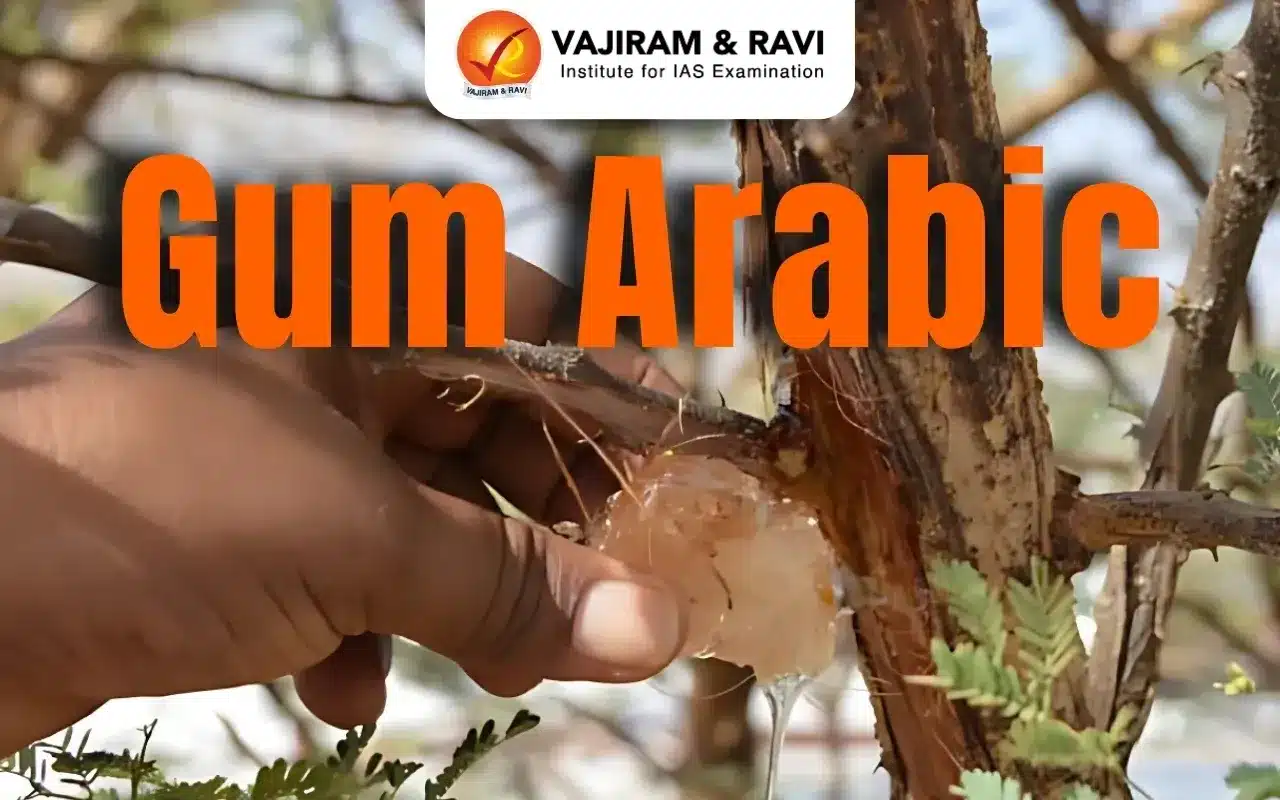Gum Arabic Latest News
Gum Arabic, essential in products like Coca-Cola and M&M’s, is being increasingly trafficked from rebel-held Sudanese regions, complicating supply chains for Western companies.
About Gum Arabic
- It is a dried, water-soluble exudate that comes primarily from two species of acacia, Acacia senegal and A. seyal.
- Distribution:
- The trees are native to North Africa and grow mainly in the sub-Saharan or Sahel zone of Africa and also in Australia, India, and South America.
- A. senegal is found in some parts of India, mainly in the dry rocky hills of south east Punjab, in the northern Aravalli hills, and in other drier parts of Rajasthan and Gujarat.
- Major producing countries: Cameroon, Chad, Mali, Nigeria, and Sudan (market share of about 70%).
- Humans have in fact used gum arabic for thousands of years; one of its earliest known uses was as an embalming agent in ancient Egypt.
- Gum Arabic has numerous applications, particularly in the food industry and in areas such as ceramics, painting, photography, and printmaking.
Gum Arabic Properties
- It is a neutral or slightly acidic salt of a complex polysaccharide containing calcium, magnesium, and potassium cations.
- It is non-toxic, odourless, and has a bland taste, and it does not affect the odour, colour or taste of the system in which it is used.
- It is somewhat yellowish in colour.
- It is insoluble in oils and in most organic solvents, but usually dissolves completely in hot or cold water, forming a clear, mucilaginous solution.
- It yields L-arabinose, L-rhamnose, D-galactose, and D-glucuronic acid after hydrolysis.
Gum Arabic FAQs
Q1. Is gum arabic ok to eat?
Ans. Yes, gum arabic is safe to eat and is widely used in the food and beverage industry as a natural additive.
Q2. Is gum arabic water-soluble?
Ans. It dissolves completely in hot or cold water, forming a clear, mucilaginous solution.
Q3. Is gum arabic soluble in oils?
Ans. It is insoluble in oils and in most organic solvents.
Source: ET
Last updated on June, 2025
→ UPSC Notification 2025 was released on 22nd January 2025.
→ UPSC Prelims Result 2025 is out now for the CSE held on 25 May 2025.
→ UPSC Prelims Question Paper 2025 and Unofficial Prelims Answer Key 2025 are available now.
→ UPSC Calendar 2026 is released on 15th May, 2025.
→ The UPSC Vacancy 2025 were released 1129, out of which 979 were for UPSC CSE and remaining 150 are for UPSC IFoS.
→ UPSC Mains 2025 will be conducted on 22nd August 2025.
→ UPSC Prelims 2026 will be conducted on 24th May, 2026 & UPSC Mains 2026 will be conducted on 21st August 2026.
→ The UPSC Selection Process is of 3 stages-Prelims, Mains and Interview.
→ UPSC Result 2024 is released with latest UPSC Marksheet 2024. Check Now!
→ UPSC Toppers List 2024 is released now. Shakti Dubey is UPSC AIR 1 2024 Topper.
→ Also check Best IAS Coaching in Delhi






















